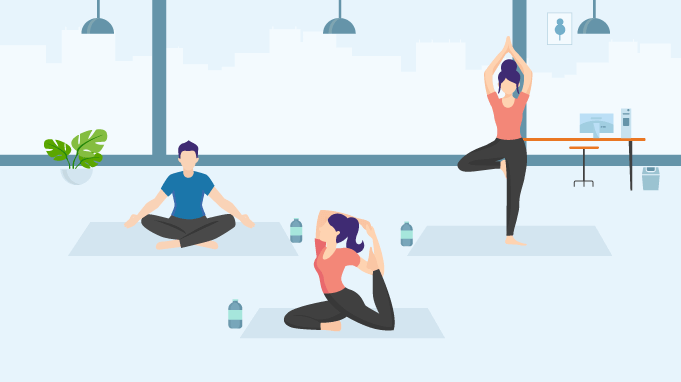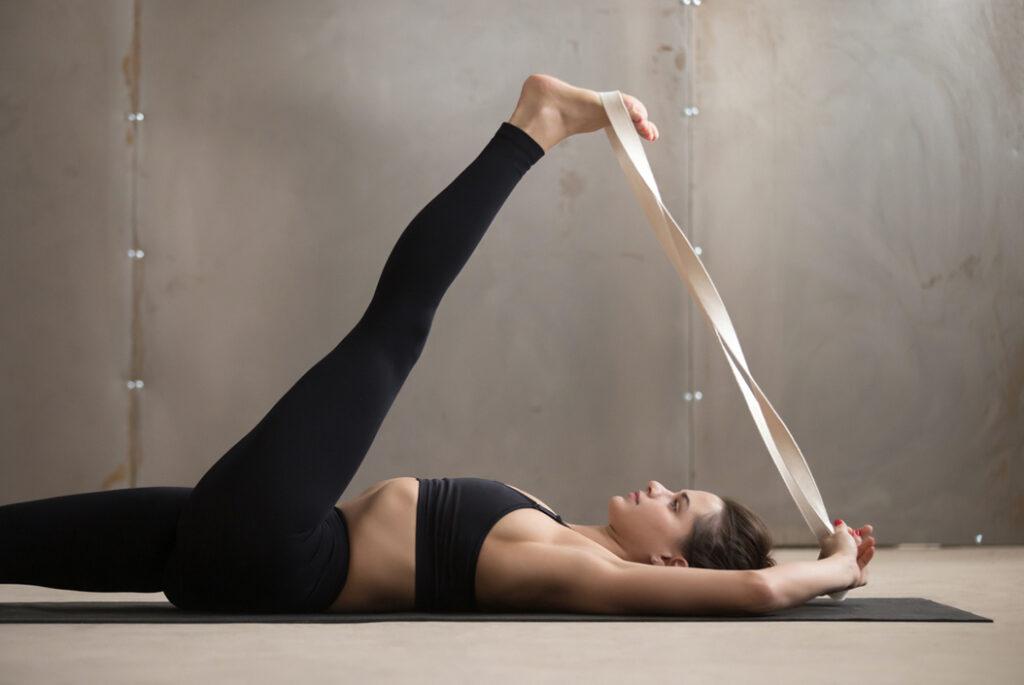Yoga routines offer a plethora of physical benefits. Regular practice can improve flexibility, strength, balance, and posture.
The flowing movements and static poses engage various muscle groups, promoting muscular endurance and toning. Yoga also enhances joint mobility and reduces the risk of injuries. Furthermore, yoga routines can aid in weight management by increasing metabolism and promoting mindful eating habits.

Mental and Emotional Well-being: Yoga Routines
Beyond physical benefits, yoga significantly impacts mental and emotional health. The combination of breathwork and mindfulness during yoga promotes relaxation and reduces stress and anxiety.
Practicing yoga encourages present-moment awareness, allowing individuals to let go of worries about the past or future, and focus on the present. As a result, regular yoga routines can improve sleep patterns and overall mental clarity.
Spiritual Connection:
Yoga is not just a physical exercise but a spiritual practice as well. The meditative aspect of yoga fosters self-awareness and self-discovery. Through deep breathing and focused attention, individuals can attain a sense of inner peace and connection with their inner selves.
For many practitioners, yoga becomes a form of moving meditation, enabling them to tap into their spirituality and sense of purpose.
Types of Yoga Routines:
There are various styles of yoga to suit different needs and preferences. Hatha yoga focuses on foundational postures and is ideal for beginners. Vinyasa yoga involves fluid movements that synchronize breath with movement.
Ashtanga yoga follows a structured series of poses, while Yin yoga emphasizes holding passive stretches for extended periods to target deeper tissues.
Customization and Personalization:
One of the significant aspects of yoga routines is their adaptability. Individuals can tailor their practice to suit their specific goals, physical abilities, and time constraints. Whether someone is seeking a high-energy workout or a gentle stretch, there is a yoga routine suitable for every individual.
Inclusivity and Accessibility:
Yoga is a practice that is inclusive and accessible to people of all ages, fitness levels, and body types. With modifications available for different abilities, everyone can participate and experience the benefits of yoga routines.
Conclusion
Yoga routines provide a holistic approach to health and well-being, encompassing physical, mental, and spiritual aspects of life. Regular practice can improve flexibility, strength, also balance, reduce stress and anxiety, and enhance mindfulness and spiritual connection.
As a versatile practice, yoga caters to individual needs, making it accessible and beneficial for people of all backgrounds and lifestyles. By incorporating yoga into daily routines, individuals can foster a positive relationship with their bodies also minds, creating a pathway to a healthier and more harmonious life. 바카라사이트
